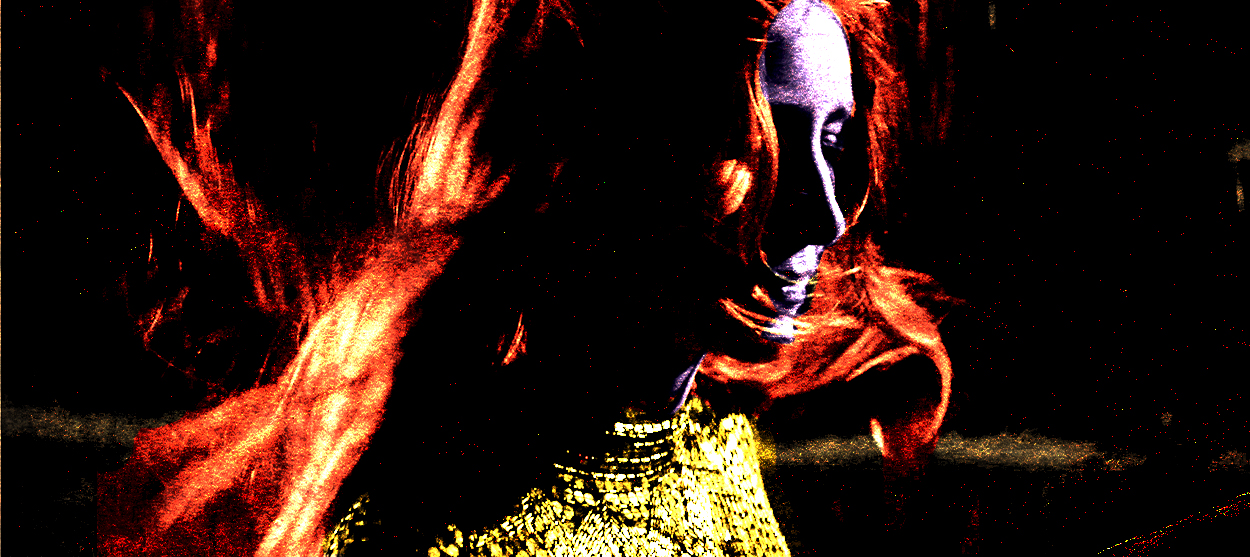The biggest liar of The Assassination of Gianni Versace
Why, it's the show itself of course. And that's okay.


Without its clarifying finale, the aims of American Crime Story: The Assassination of Gianni Versace were almost as hard to unpack as the lies of its protagonist, serial killer and pathological fabulist Andrew Cunanan. That might, in fact, be exactly the point. The series I once criticized for its roaming point of view ended by lying as freely and charmingly as its dancing villain. In so doing, it forged an unlikely and uncomfortable alliance with Cunanan himself.
It's no secret that, as a series, Versace mixed truth with half-truths and lies almost as much as Cunanan did. Vulture has run a great fact-checking column for each episode that itemizes the liberties the show takes with the truth. The question, to my mind, was how to interpret those departures. When showrunner Tom Rob Smith swapped in an entire ham (with a knife sticking out of it) for the famous ham sandwich Cunanan left behind at the Miglin residence (after having brutally murdering the owner), it seemed clear to me that once we understood that substitution — that blindingly literal instance of the show "hamming it up" — we'd understand a lot of what the series was doing.
What it's doing, it turns out, is experimenting with narrative identification. And identification is a lot of what this show was actually about: not gender identification, not sexual identification, but empathic identification: who gets it and who doesn't. Back in 1997, while gauging local reaction to the murders in the area where Cunanan lived and studied, Matthew Lickona reported the following exchange between his wife — who asked about the response in La Jolla — and a La Jolla resident:
The Week
Escape your echo chamber. Get the facts behind the news, plus analysis from multiple perspectives.

Sign up for The Week's Free Newsletters
From our morning news briefing to a weekly Good News Newsletter, get the best of The Week delivered directly to your inbox.
From our morning news briefing to a weekly Good News Newsletter, get the best of The Week delivered directly to your inbox.
"No, he's from Hillcrest," he corrected her. "That's where all the gays are. Nobody in this town is concerned about him at all, because we don't identify with him." [The San Diego Reader]
Versace makes you identify with him. It dispenses with that craven, manufactured distinction. It condemns the American indifference to gay deaths around which much of the series is structured. And, however much it sympathizes with his victims (and it does), the series also insists on respecting Cunanan's fervid need for attention even as it ostensibly disciplines it. One of the facts Versace quotes most about Cunanan was that he was voted (depending on the source) "Most Likely to be Remembered" or "Least Likely to be Forgotten" in high school. The series ends by focusing in on a plaque bearing Cunanan's name. It turns out to be on a vault in a mausoleum — this feels, then, explicitly like an act of remembrance. But as the camera slowly pans out to show more and more other vaults, the effect becomes punitive: The series seems to focus on the stern, equalizing near-anonymity death finally confers.
If that feels like a finger-wagging lesson, the show inverts that once again. The moral should be "Cunanan, who wanted only to be remembered, failed." Except, of course, that he didn't fail: The series itself amounts to a massive act of remembrance. The show explicitly named for Versace was actually about Cunanan. If fame was his goal, he lives on, unchastened.
That lesson about mortality, in other words, feels like exactly the kind of empty wisdom Cunanan (or his abusive, charismatic father, Modesto) might impart.
I've made no secret of the ethical questions I've had about this series, which has presented as fact things that aren't even remotely confirmed, including the claim that Cunanan and Lee Miglin were sexually involved and the suggestion that Cunanan was molested by his father, Modesto. These are big truths to bend for dramatic effect, and the series did so without a wink or a tremor — just as Cunanan did.
A free daily email with the biggest news stories of the day – and the best features from TheWeek.com
But if the point was to replicate rather than condemn Cunanan's curious modus operandi, it was a singular success. Paste Magazine's Matt Brennan was the first to pick up on the show's investment in forcing this connection to the villain.
It confronts us — scratch that, it confronted me — with a startling implication: That in the suburban upbringing, the shame, the dissembling, the desperate desire not to be a faggot, I might resemble the murderer more than I do the object of his obsession. [Paste Magazine]
Seen this way, the finale parallels Cunanan's frenzied effort to escape with the show's own struggle to escape Cunanan's stranglehold on its narrative sympathies. We watch Cunanan panicking, calling his father, reduced to eating dog food, just as we see the series roving wildly back to its ostensible protagonists: Versace's sister Donatella (Penelope Cruz) and his lover Antonio (Ricky Martin). But instead of resting with those characters (or giving them the final say), it invents wildly and well. Donatella and Antonio have an extremely painful conversation, we suffer with Antonio as he's marginalized at Versace's funeral, and we witness his tragic suicide attempt. None of these details seem to be particularly well-supported — they are Cunanan-isms — and the show can't help but revert to its charismatic antihero at the end. Even in death, he remains the show's most compelling character.
This is not a true-crime story at all, then. It's creative nonfiction in its most creative sense: a portrait of a serial liar that chooses, in the end, to lie with him.
Lili Loofbourow is the culture critic at TheWeek.com. She's also a special correspondent for the Los Angeles Review of Books and an editor for Beyond Criticism, a Bloomsbury Academic series dedicated to formally experimental criticism. Her writing has appeared in a variety of venues including The Guardian, Salon, The New York Times Magazine, The New Republic, and Slate.
-
 ‘Let 2026 be a year of reckoning’
‘Let 2026 be a year of reckoning’Instant Opinion Opinion, comment and editorials of the day
-
 Why is Iran facing its biggest protests in years?
Why is Iran facing its biggest protests in years?TODAY’S BIG QUESTION Iranians are taking to the streets as a growing movement of civic unrest threatens a fragile stability
-
 How prediction markets have spread to politics
How prediction markets have spread to politicsThe explainer Everything’s a gamble
-
 Walter Isaacson's 'Elon Musk' can 'scarcely contain its subject'
Walter Isaacson's 'Elon Musk' can 'scarcely contain its subject'The latest biography on the elusive tech mogul is causing a stir among critics
-
 Welcome to the new TheWeek.com!
Welcome to the new TheWeek.com!The Explainer Please allow us to reintroduce ourselves
-
 The Oscars finale was a heartless disaster
The Oscars finale was a heartless disasterThe Explainer A calculated attempt at emotional manipulation goes very wrong
-
 Most awkward awards show ever?
Most awkward awards show ever?The Explainer The best, worst, and most shocking moments from a chaotic Golden Globes
-
 The possible silver lining to the Warner Bros. deal
The possible silver lining to the Warner Bros. dealThe Explainer Could what's terrible for theaters be good for creators?
-
 Jeffrey Wright is the new 'narrator voice'
Jeffrey Wright is the new 'narrator voice'The Explainer Move over, Sam Elliott and Morgan Freeman
-
 This week's literary events are the biggest award shows of 2020
This week's literary events are the biggest award shows of 2020feature So long, Oscar. Hello, Booker.
-
 What She Dies Tomorrow can teach us about our unshakable obsession with mortality
What She Dies Tomorrow can teach us about our unshakable obsession with mortalityThe Explainer This film isn't about the pandemic. But it can help viewers confront their fears about death.
